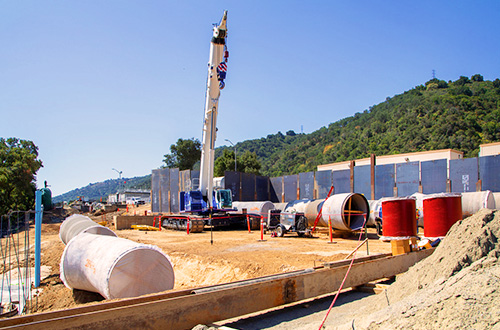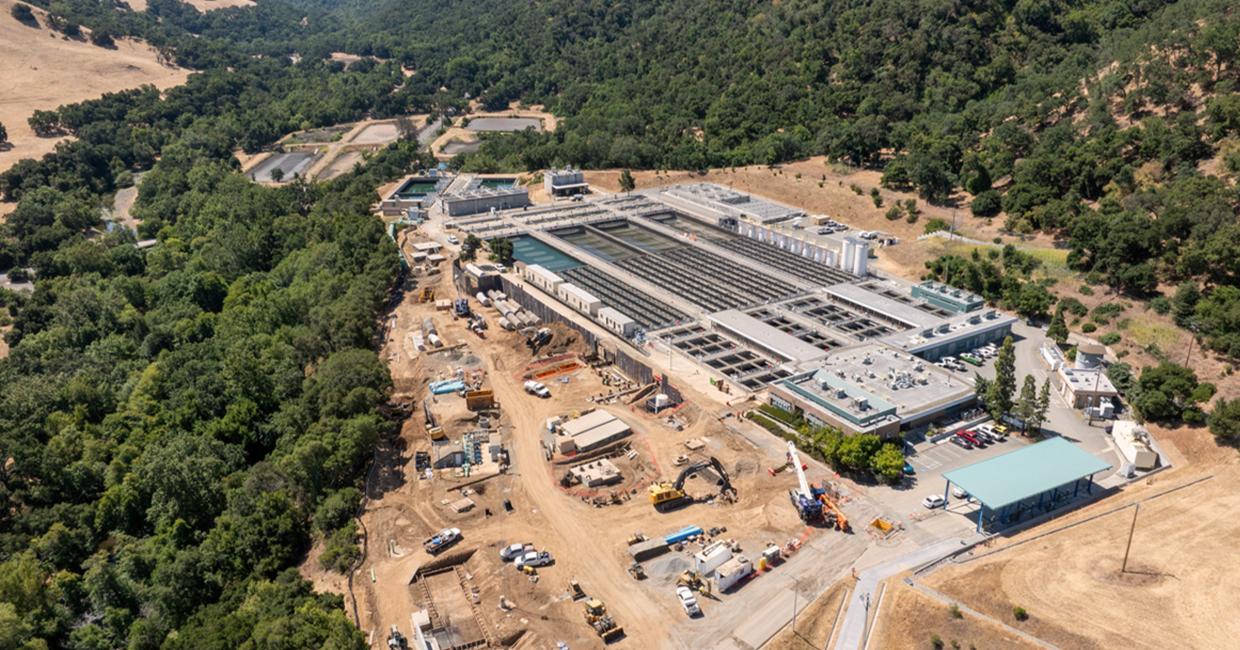The San Francisco Public Utilities Commission (SFPUC) has a well-deserved reputation for delivering high quality drinking water throughout five Bay Area counties, meeting and exceeding all established standards. However, because SFPUC's water sources come from large open-area reservoirs, they sometimes contain harmless organic compounds that some people can detect. The water is frequently described as having an “earthy” taste or smell. This situation typically happens in the warmest months when algae can bloom in the reservoirs.
Because these compounds are too small to be removed by our standard water treatment procedures, the SFPUC uses another method called ozonation. Injecting ozone helps break down organic and inorganic compounds in water that can cause taste and odor issues. It's an environmentally friendly option since ozone simply reverts to oxygen after use. Until now, the SFPUC has only had ozonation at the Harry Tracy Water Treatment Plant, which covers water sources in San Mateo County.

In recent years, however, SFPUC water quality experts have detected increasing levels of naturally occurring organic compounds in the agency's two large East Bay water sources, the Calaveras and San Antonio reservoirs. To address this, the SFPUC is now building an ozonation facility at the Sunol Valley Water Treatment Plant (SVWTP) that will help neutralize these compounds.
When completed, this project will include a liquid oxygen and nitrogen facility with three vaporizers and three 15,000-gallon horizontal storage tanks, an ozone generation building, an ozone contractor structure, and other supporting systems. The SFPUC will also be making improvements such as installing a new radio tower and washwater recovery pumps and upgrading electrical equipment.
Until now, the SFPUC deployed an alternative method involving powdered activated carbon to reduce taste and odor compounds at SVWTP. This process involved adding and then removing granular activated carbon, which can increase wear and tear on process equipment. It’s also not as effective as ozonation and makes it difficult to prevent taste and odor issues when the SFPUC needs to draw heavily on either the Calaveras or San Antonio reservoirs.
The new SVWTP ozonation project, scheduled for completion in February 2029, will improve the SPFUC’s ability to continue to reliably meet its water quality goals everywhere we supply water — especially during warmer months and when the Hetch Hetchy water supply is shut down for maintenance or water quality issues.


